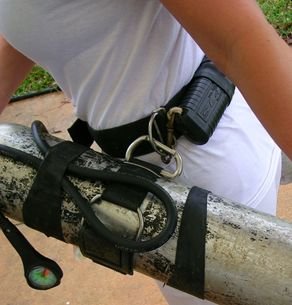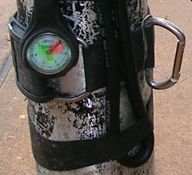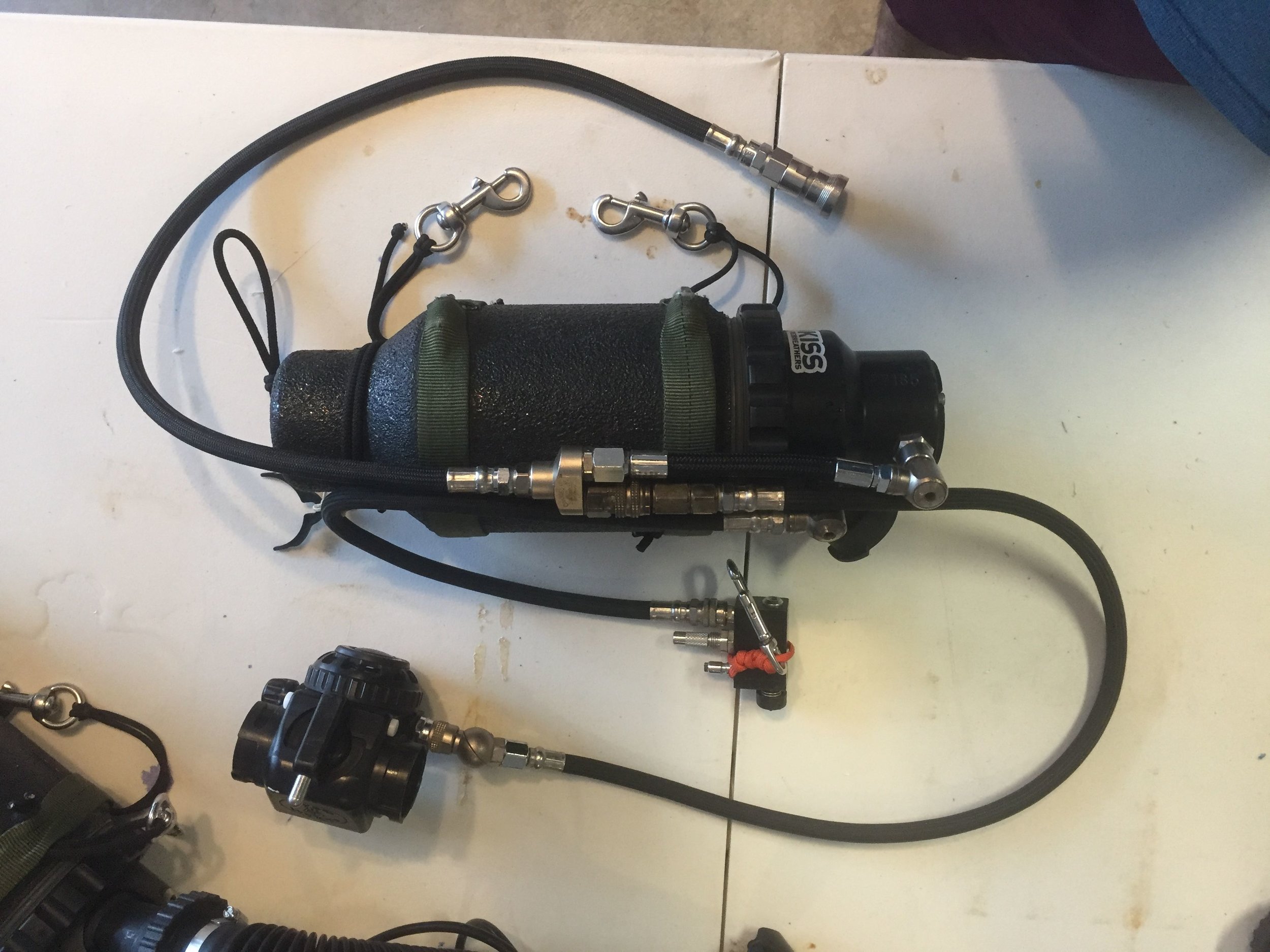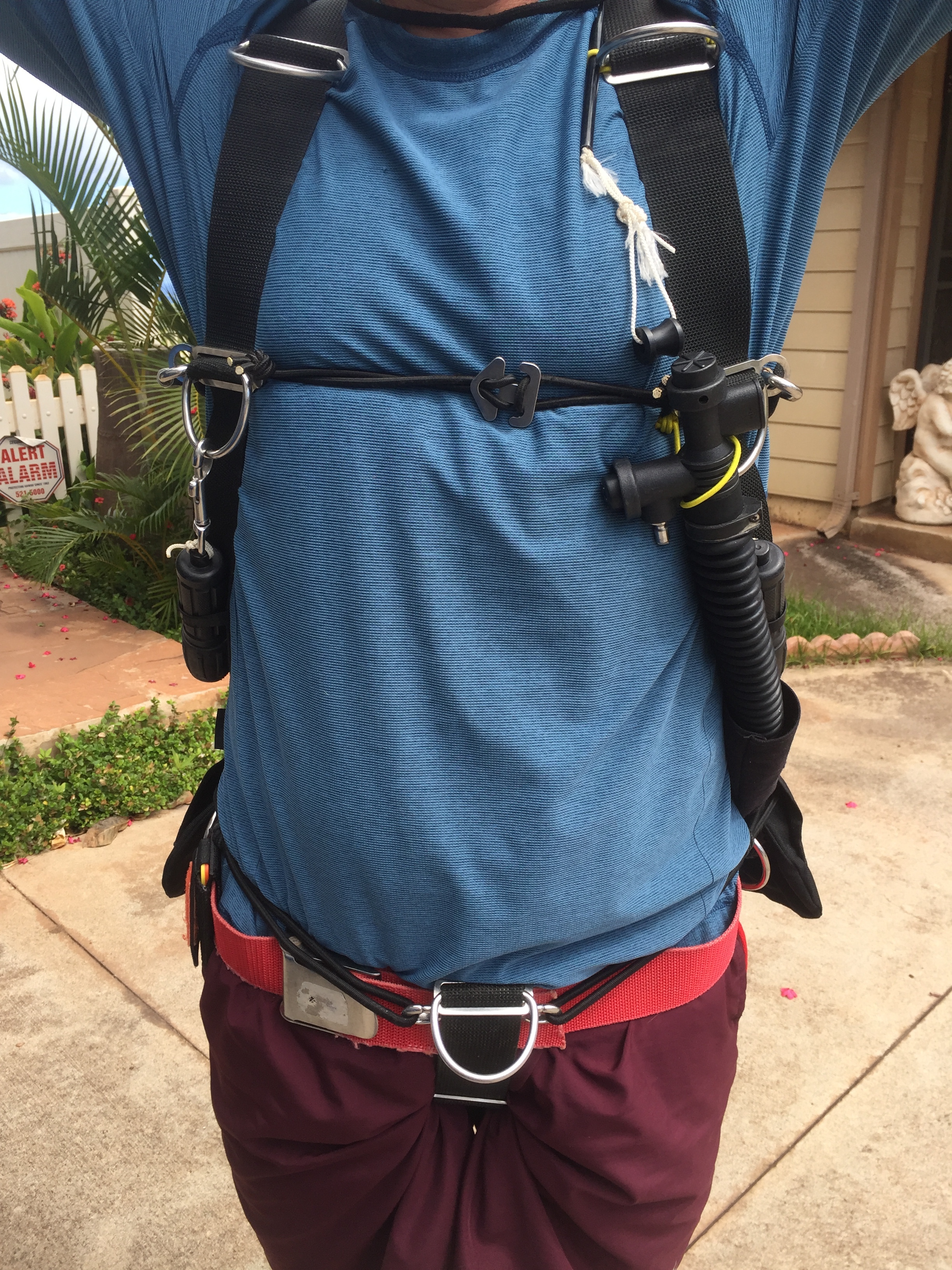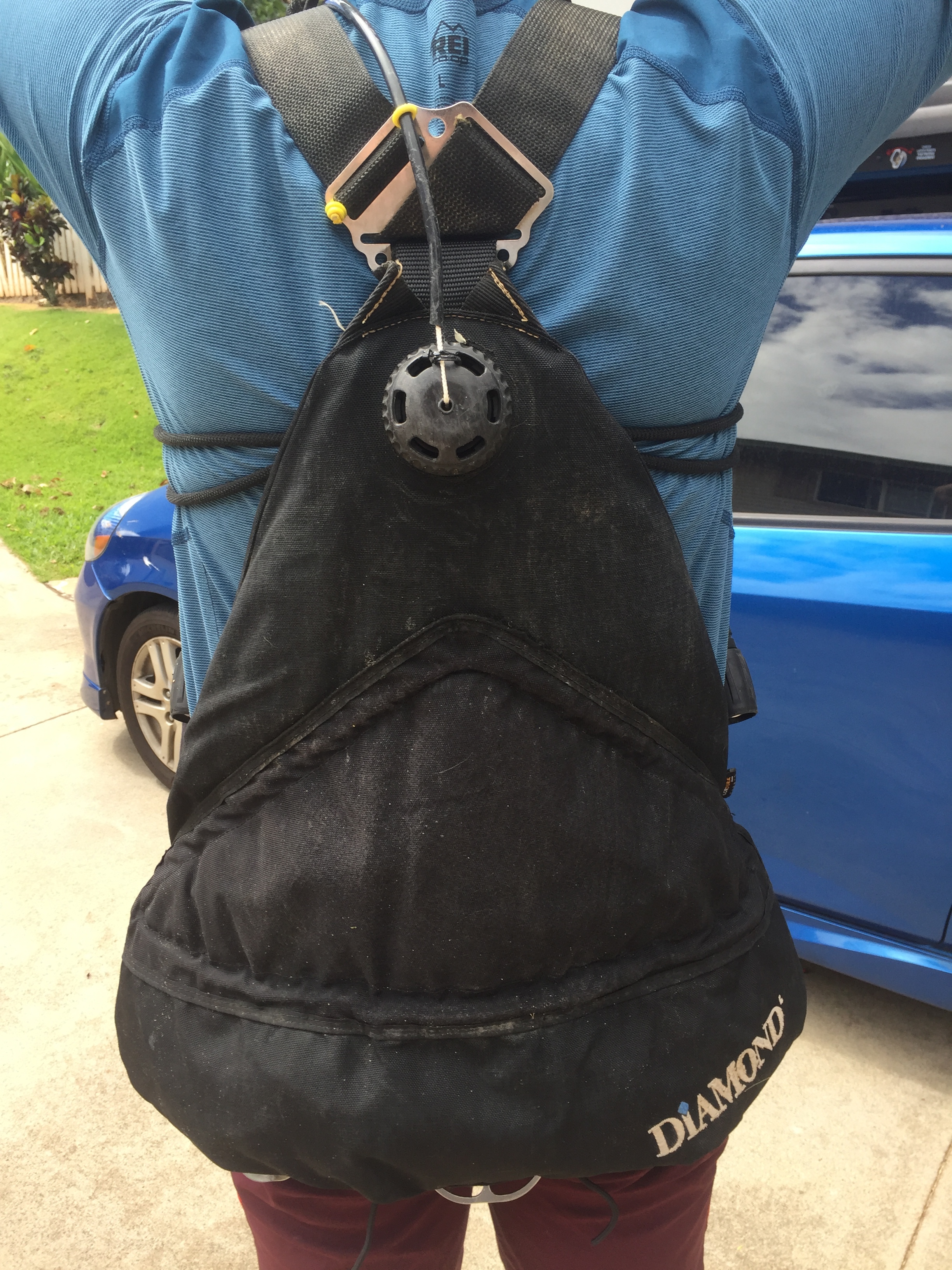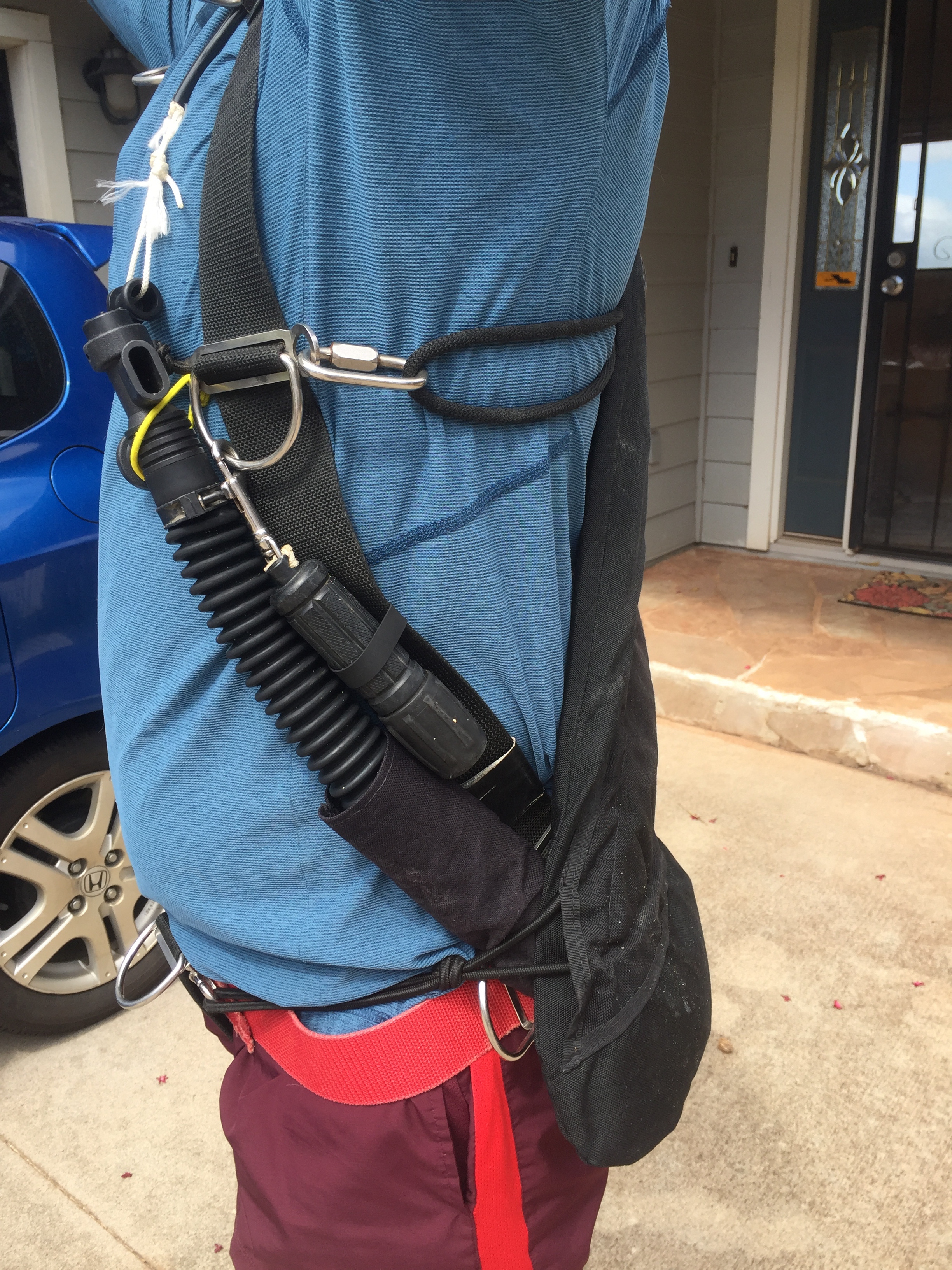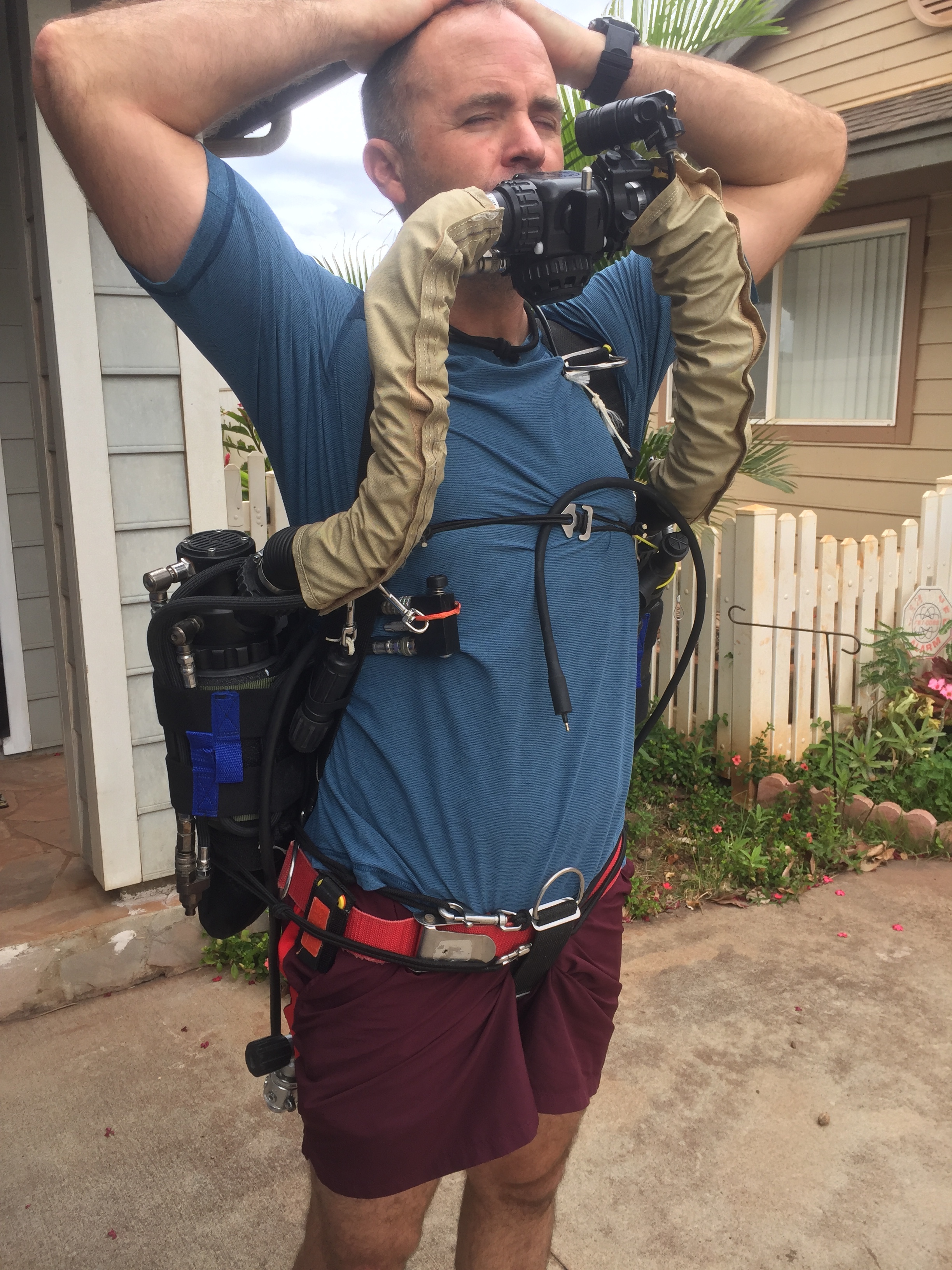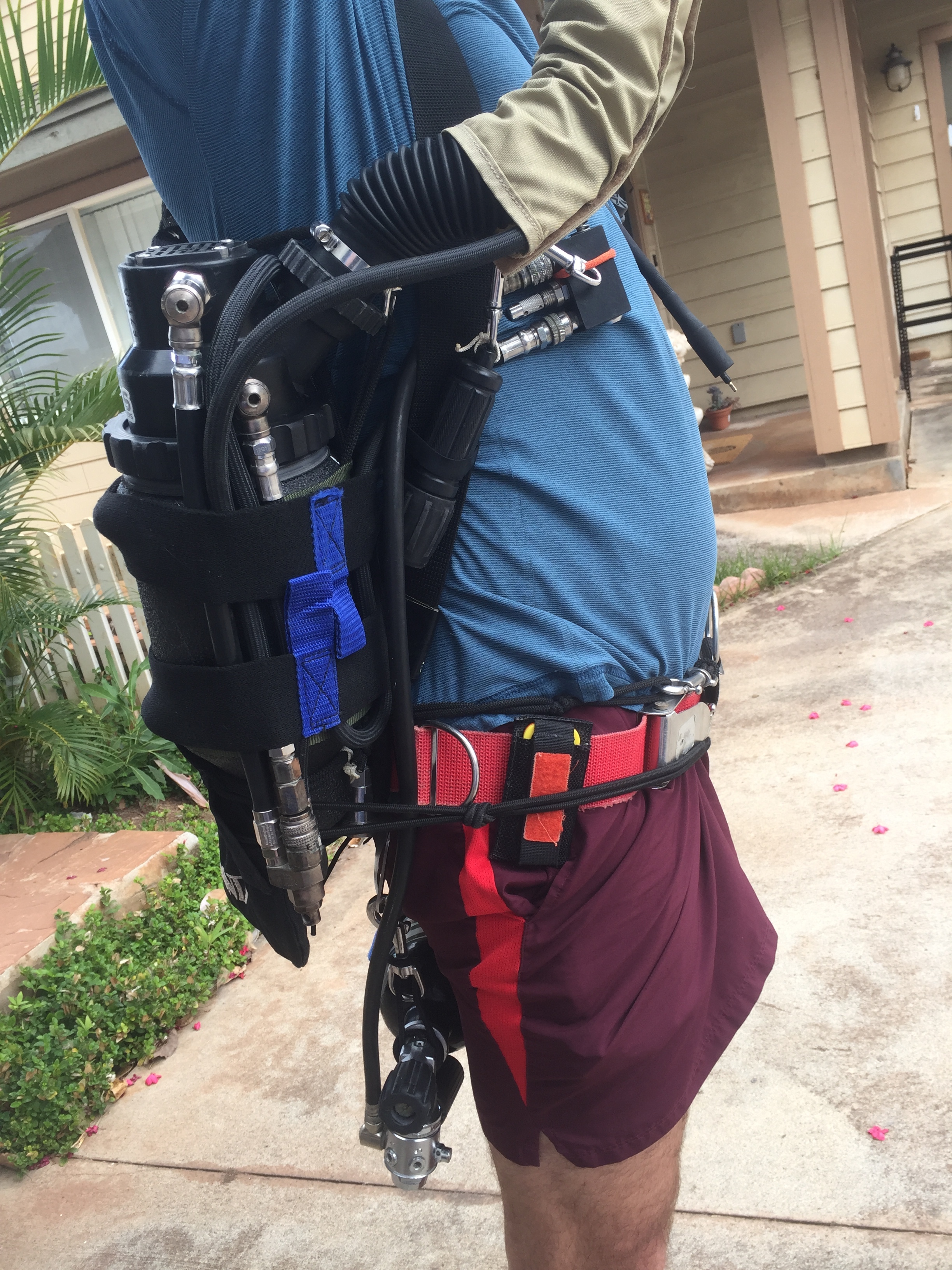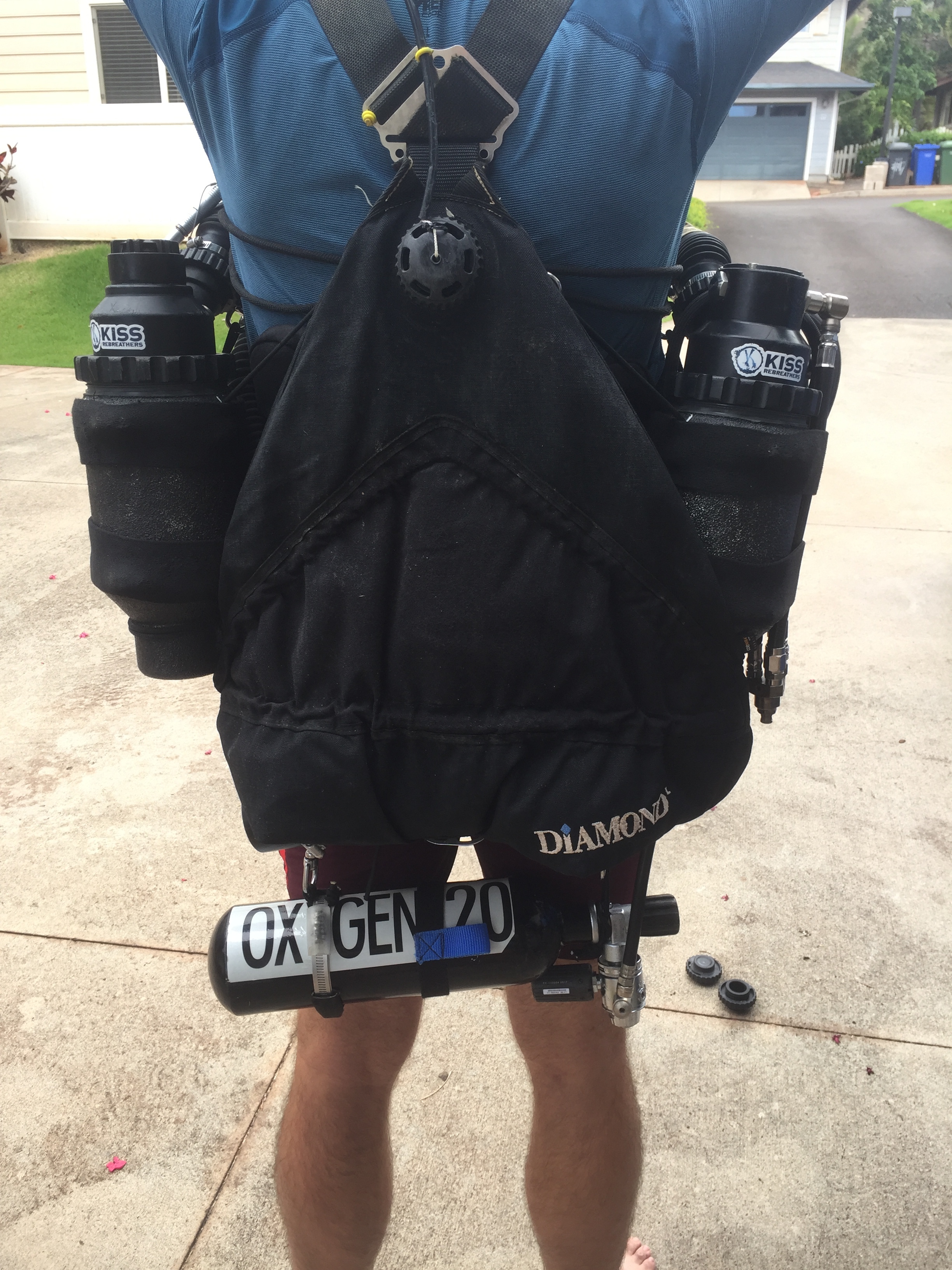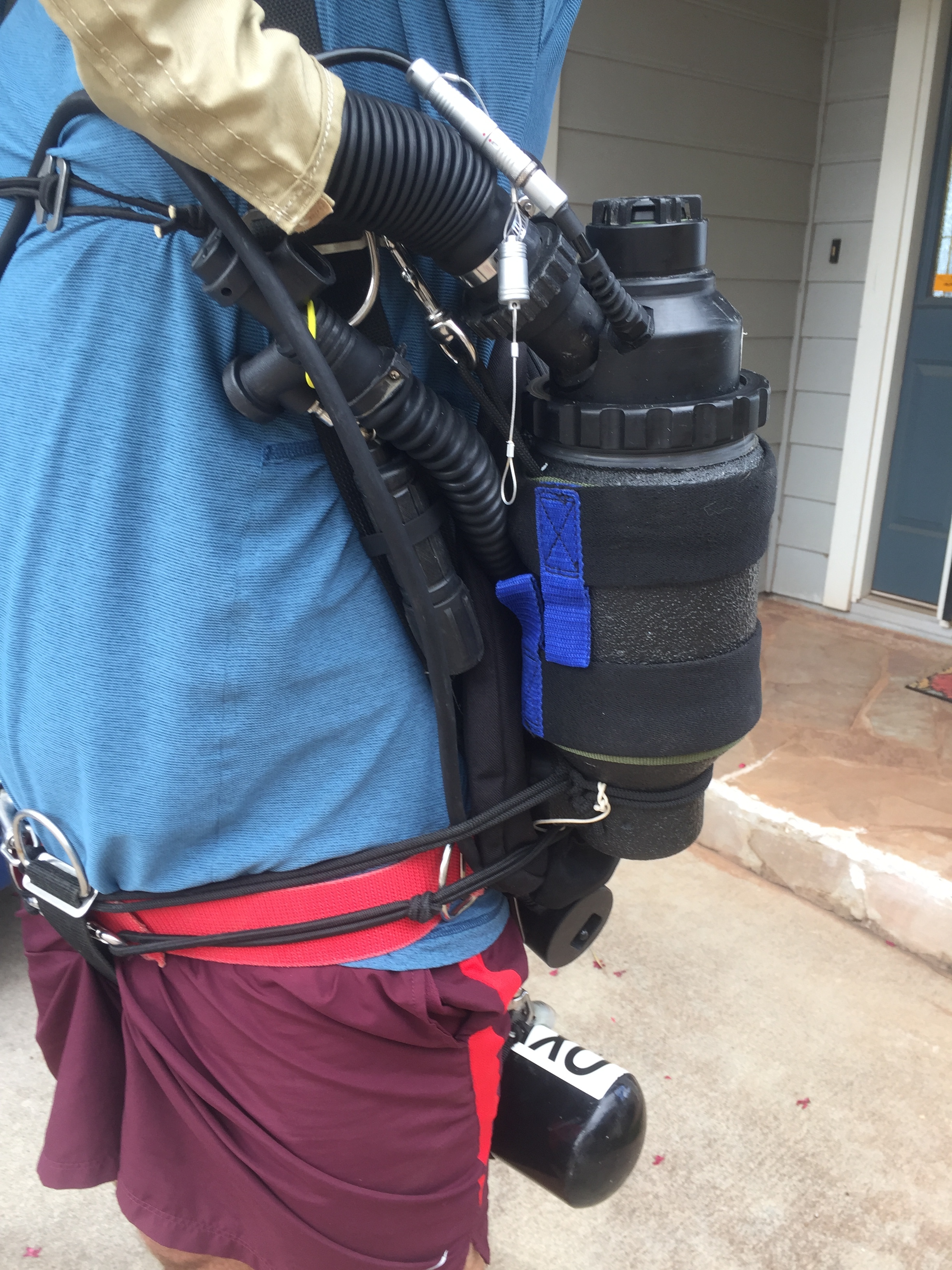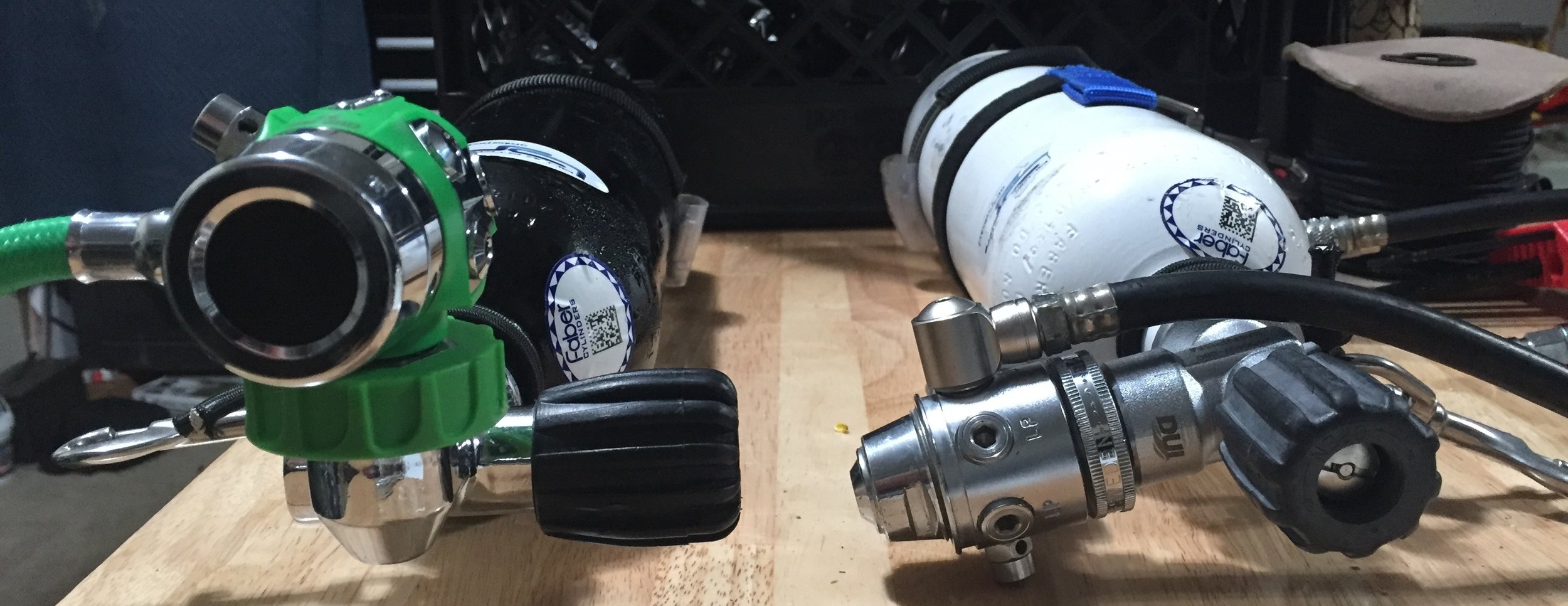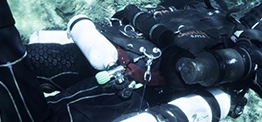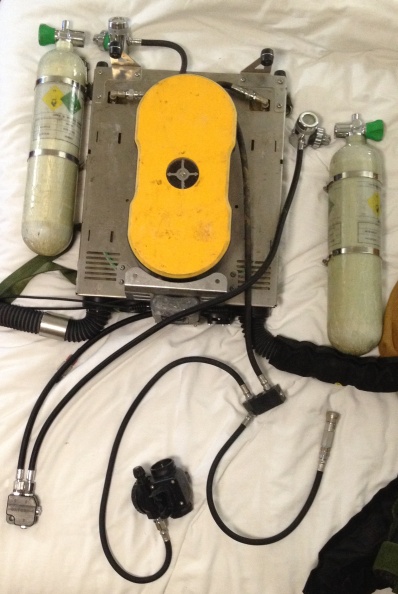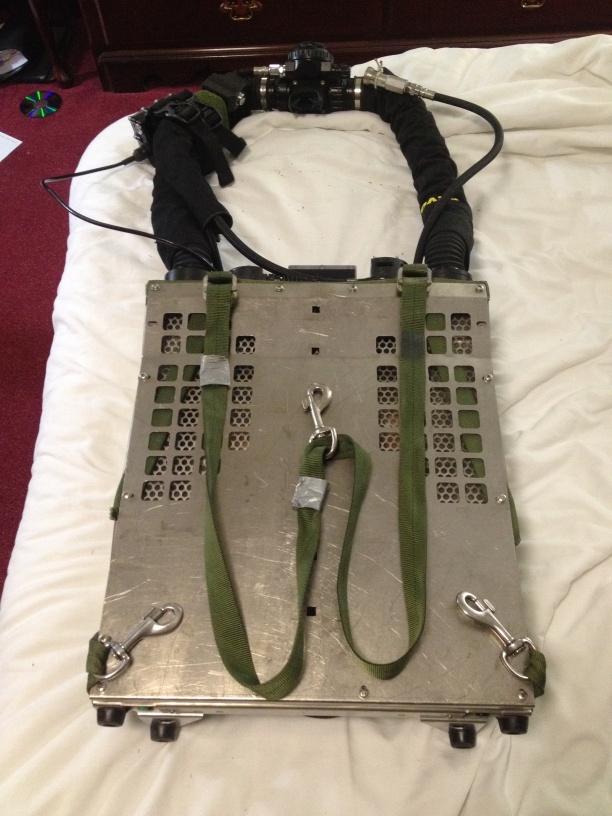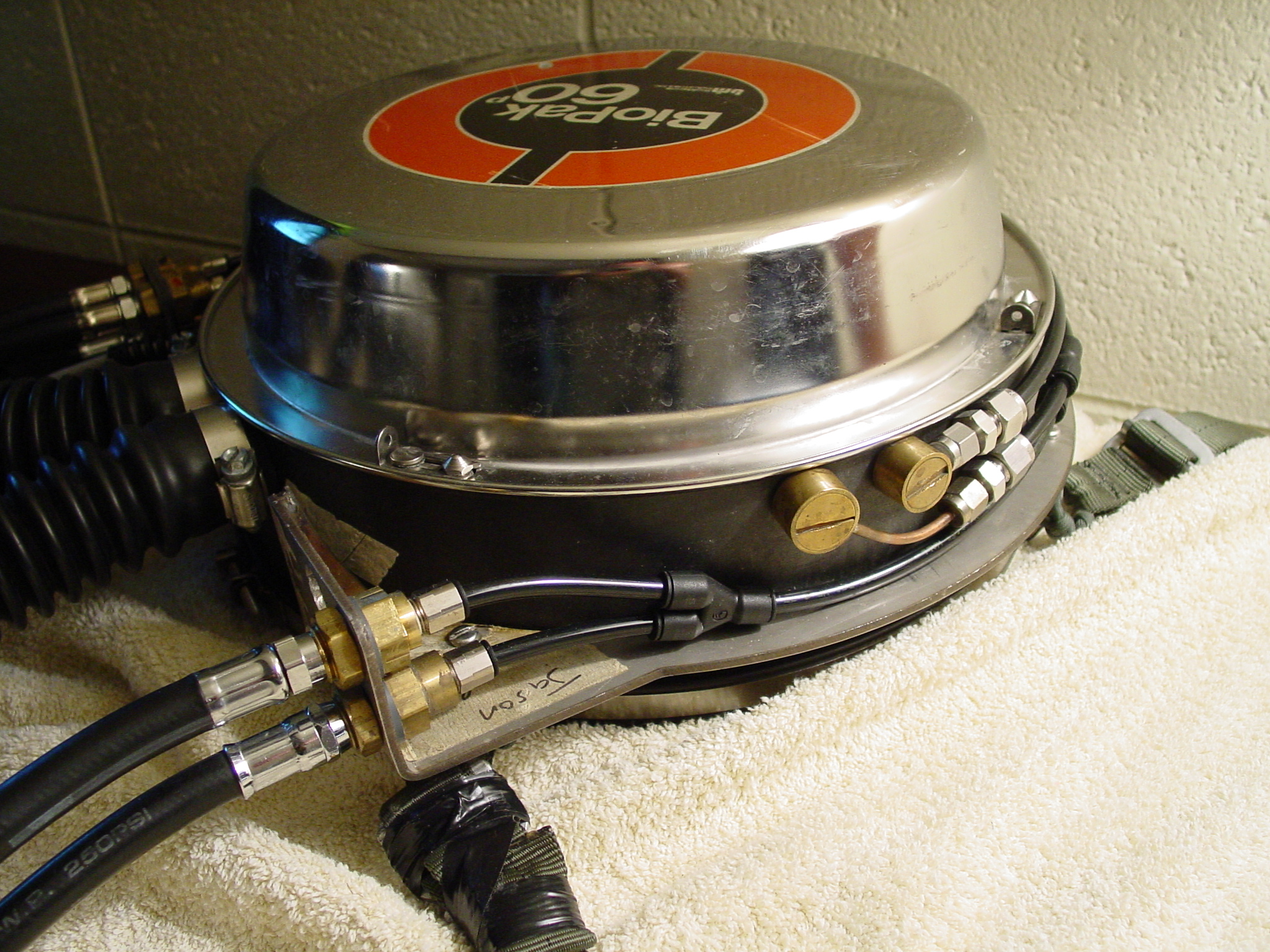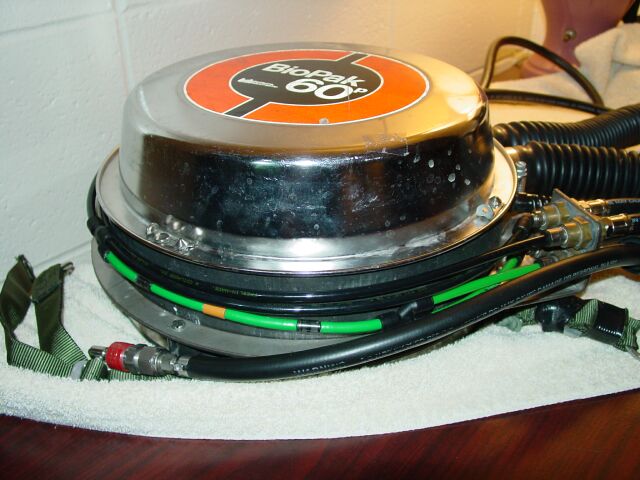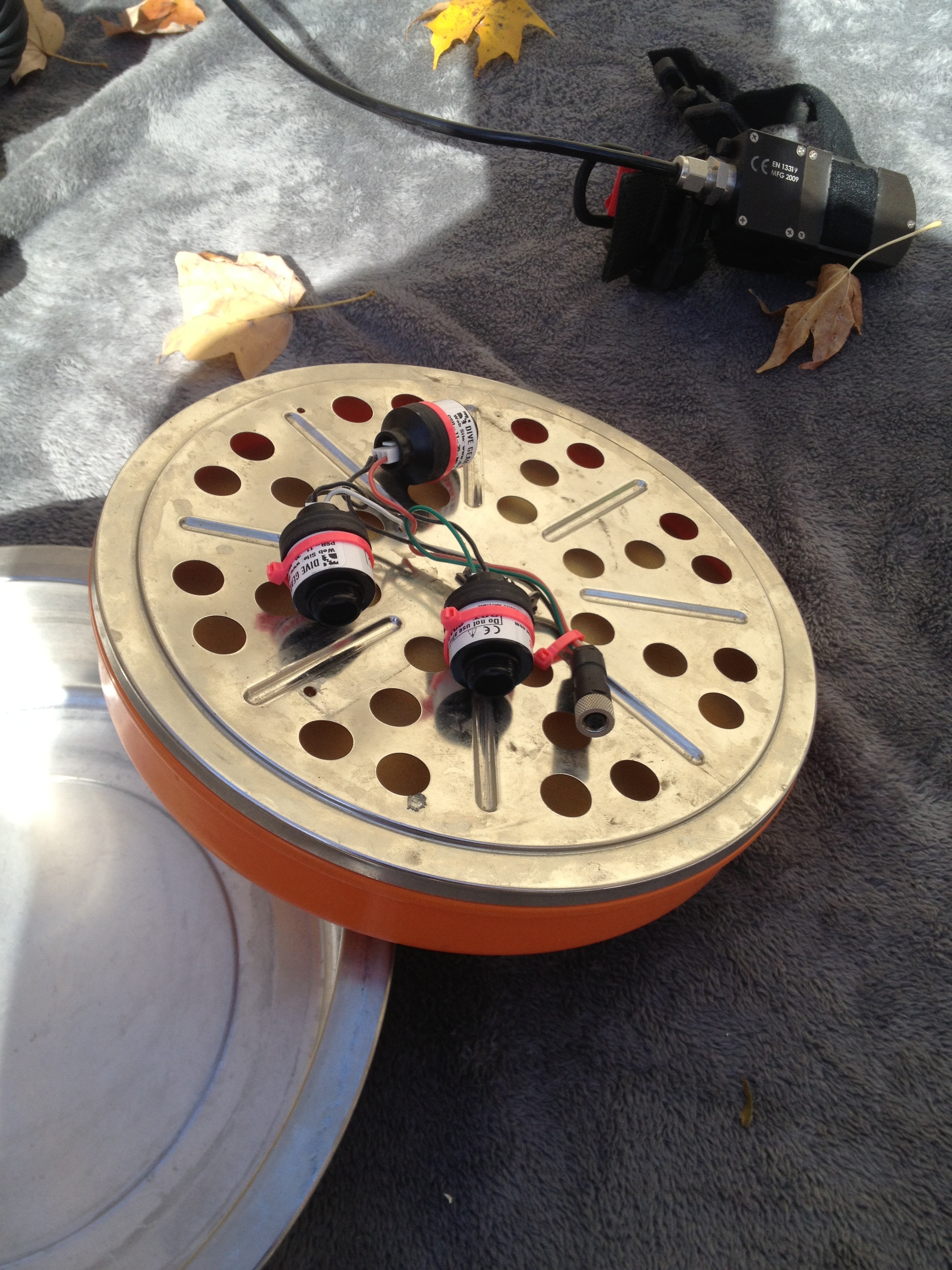Some folks have been asking about how I configure my Pelican Air 1615 TRVL case to best fit a Liberty Sidemount, along with my home built parts panel, to store all the knick-knacks that come your rebreather.
The Pelican Air 1615 TRVL- the choice travel box for the Divesoft Liberty Sidemount Rebreather.
In the image above is my Pelican Air- you can get these from Divesoft in a flashy red, or you can find them at colorcase.com in a range of bright colors with matching or other color handles and TSA lock latches, or even black or grey, if you prefer more low key at the airport.
In the picture above, you can see the row of stainless steel nuts on the left (wheel) side of the case. These are the back side of the tank mounting brackets mounted in the case visible in the picture below. The stainless nuts and countersunk screws are sealed with acrylic on installation, and hold an aluminum strip that is spaced to hold a set of Liberty Sidemount tank straps for securing the tanks inside the case. The tanks are on the wheel side of the case, so when wheeling the case around, the weight is over the wheels- having the tanks on the other side would be very awkward, which you can tell when just moving the case around loaded.
Extra set of tank straps used to secure tanks to edges of box. Bolt placement, which does not damange the strap, allows use of straps as spares in a pinch.
The foam in the bottom is the standard foam that ships with the case, with the cutouts for the handle and wheels. The foam on the ends is 1/2” XCEL closed cell foam with adhesive backing available from Amazon. These keep the bottles and the scrubber from bumping against the end of the case, and the same for the regulators on the other end.
Placement of the tanks and scrubber pre-assembled to the mounting frame.
Here are the bottles and the frame and scrubber packed in the case. The size of the scrubber holds it in place against the foam on the bottom of the case and the top, but its smart to not put large items in the center of the parts panel, as we will see later. Also, typically, I don’t travel with the counterlung connecting tubes installed, as they can by pushed back against the handset connectors and sustain cuts in the hoses. I also always use tank plugs to keep anything from bumping against the tank valves and venting gas.
Travel placement of counterlungs and breathing loop
And here we are with the counterlung and breathing loop packed. Everything is ready to go! I recently saw someone making protective covers for the add valves for travel- I would recommend these, as the only time I have knocked an add lever off is during travel, and this would be cheap insurance, for not much weight or cost.
My parts panel hidden away inside the zippered top, which is part of the Pelican Air TRVL package.
And now for the parts panel- As you can see, it zips into the top of the pelican case- It’s important that you order the correct pelican case- not all models have this zipper top. Only the TRVL models will include it. Unfortunately, the TRVL models don’t come with the foam, so you have to purchase that one piece of foam for the bottom later.
The only part that doesn’t come with the liberty is the battery pack on the lower right- which will completely charge the head completely before having to be plugged in. I carry a ready supply of spare parts.
Here is the parts panel with all the stuff laid out. The panel is constructed from heavy polyester mesh (Seattle Fabrics) edged with 1/2” nylon trim and sewn with enough extra space for things to fit underneath. Each pocket has a little overlapping flap on top to keep things inside when the box is tilted. Everything is sewn on to a 500 denier nylon backing, and once complete, the whole thing is sewn onto some 1/4” XCEL closed cell foam so that nothing is crushed against the top. in hindsight, i could have used something slightly stiffer on the backing, or maybe a couple of ersatz battens, as the panel will sag in the middle if the top is up with the zipper fully open, but this is avoided by not completely opening both zipper ends.












